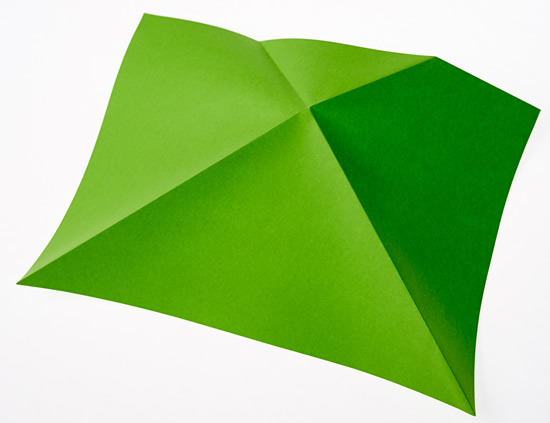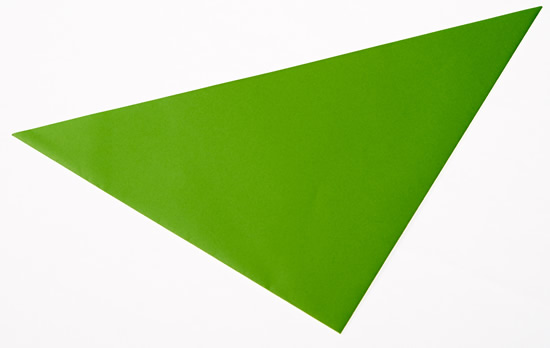Skip over navigation
You may like to try Paper Patchwork 1 before this challenge.
Below is a picture of an unfolded piece of paper.
Can you work out what shape is made when it's folded up using the crease pattern shown?

Click below if you want to see the shape.

Can you make one of these shapes with a new piece of paper?
Now, make several of the same shape from A4, A5 and A6 pieces of paper in contrasting colours.
Challenge 1
Take a large and small shape made from your first colour and a medium shape made from your second colour.
Make a pattern from your shapes, by laying them on top of each other, that fits both of these rules:
You must be able to see at least part of each shape.
All three shapes must fit inside the perimeter (outline) of the largest shape.
Challenge 2
Use a new large, medium and small shape to recreate the same pattern but in opposite colours from Challenge 1.
Place these two patterns next to each other and begin to make a 'Paper Patchwork' out of the patterns on your classroom floor.
Can you make each of the new patterns a different design from any of the others?
We would love to see photos of the patchwork patterns you have made!

Or search by topic
Number and algebra
Geometry and measure
Probability and statistics
Working mathematically
Advanced mathematics
For younger learners
Paper Patchwork 2
Age 5 to 7
Challenge Level 





You may like to try Paper Patchwork 1 before this challenge.
Below is a picture of an unfolded piece of paper.
Can you work out what shape is made when it's folded up using the crease pattern shown?

Click below if you want to see the shape.

Can you make one of these shapes with a new piece of paper?
Now, make several of the same shape from A4, A5 and A6 pieces of paper in contrasting colours.
Challenge 1
Take a large and small shape made from your first colour and a medium shape made from your second colour.
Make a pattern from your shapes, by laying them on top of each other, that fits both of these rules:
You must be able to see at least part of each shape.
All three shapes must fit inside the perimeter (outline) of the largest shape.
Challenge 2
Use a new large, medium and small shape to recreate the same pattern but in opposite colours from Challenge 1.
Place these two patterns next to each other and begin to make a 'Paper Patchwork' out of the patterns on your classroom floor.
Can you make each of the new patterns a different design from any of the others?
We would love to see photos of the patchwork patterns you have made!
You may also like
Let's Investigate Triangles
Vincent and Tara are making triangles with the class construction set. They have a pile of strips of different lengths. How many different triangles can they make?

